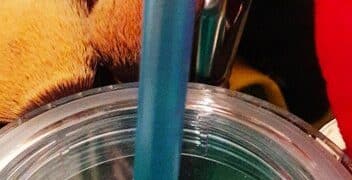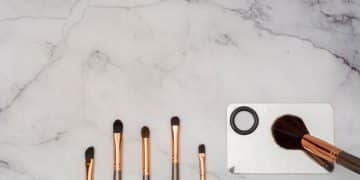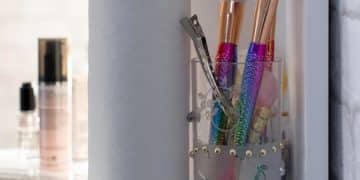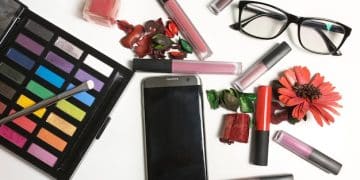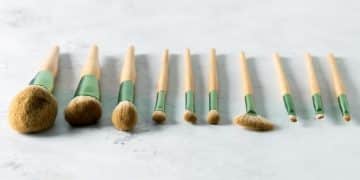The Ultimate Guide to Makeup Brushes: Choosing, Using, and Cleaning
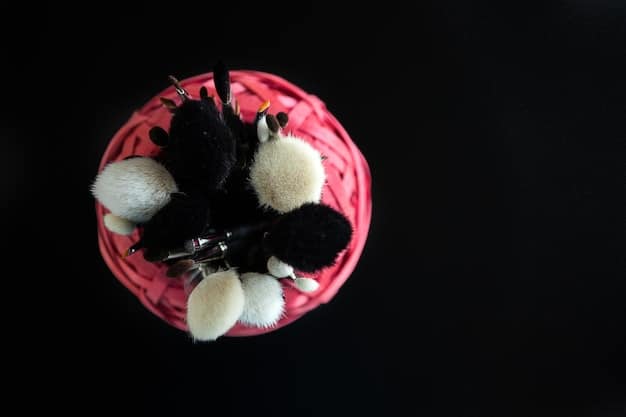
Discover the best makeup brushes for every application, from foundation to eyeshadow, and learn essential cleaning techniques to keep your tools in top condition.
Achieving a flawless makeup look starts with the right tools. Among these, the best makeup brushes for every application (and how to clean them) are indispensable. Whether you’re a seasoned pro or just starting out, understanding the different types of brushes and how to care for them can dramatically improve your makeup application.
Understanding the Basics of Makeup Brushes
Makeup brushes are more than just tools; they’re an extension of your hand, allowing you to create everything from a natural glow to a dramatic evening look. Understanding the basics of makeup brushes can help you make informed decisions when building your collection.
Here’s what you need to know to get started.
Types of Bristles: Natural vs. Synthetic
The bristles of a makeup brush determine how the product is applied. Natural bristles are often made from animal hair and are ideal for powder products because they pick up and distribute pigment evenly. Synthetic bristles, made from nylon or other synthetic materials, are better suited for liquid or cream products because they don’t absorb as much product.
Brush Shapes and Sizes
The shape and size of a brush dictate its purpose. Larger, fluffy brushes are great for applying powders and blending, while smaller, denser brushes are perfect for precise application of eyeshadow or concealer. Angled brushes are useful for contouring and defining features.
- Foundation Brush: Flat or rounded, used for applying foundation evenly.
- Powder Brush: Large and fluffy, for applying loose or pressed powder.
- Blush Brush: Angled or rounded, for applying blush to the apples of the cheeks.
- Eyeshadow Brush: Small and dense, for applying eyeshadow to the lid and crease.
Choosing the right brush for each application is a game changer.
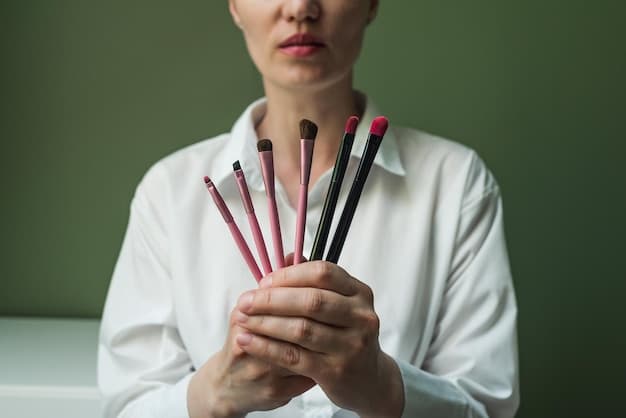
Essential Brushes for a Complete Makeup Kit
Building a comprehensive makeup kit doesn’t require an overwhelming number of brushes. A few well-chosen, high-quality brushes can cover all your essential makeup needs.
Here’s a list of must-have brushes for any makeup enthusiast.
Foundation Brush
A good foundation brush is essential for creating a smooth, even base. Look for brushes with densely packed bristles that won’t leave streaks.
Concealer Brush
A small, precise concealer brush is perfect for spot-correcting blemishes or brightening under the eyes. Choose a brush with a pointed tip for hard-to-reach areas.
Powder Brush
A large, fluffy powder brush is ideal for setting your foundation and eliminating shine. Opt for a brush with soft bristles that won’t disrupt your makeup.
- Eyeshadow Blending Brush: Soft and fluffy for seamless blending.
- Angled Eyeliner Brush: Perfect for creating sharp, defined lines.
- Contour Brush: Angled to fit the hollows of your cheeks and define your features.
Having these essential brushes ensures you’re prepared for any makeup look.
Brushes for Flawless Complexion Application
Achieving a flawless complexion involves more than just using the right products; the application technique is equally important. Specific brushes are designed to help you create a smooth, natural-looking finish.
Here’s how to use them effectively.
Foundation Application Techniques
When applying foundation, use a flat or rounded foundation brush and start at the center of your face, blending outwards. Use short, even strokes to avoid streaks. For a more natural look, try stippling the foundation onto your skin.
Concealer Blending Tips
Use a small, pointed concealer brush to apply concealer to areas that need extra coverage, such as blemishes or dark circles. Gently tap the concealer into your skin to blend it seamlessly.
Powder Application for a Natural Finish
To set your foundation and reduce shine, use a large, fluffy powder brush to lightly dust powder over your face. Focus on areas that tend to get oily, such as your forehead, nose, and chin.
Proper application techniques can make a huge difference in your overall look.
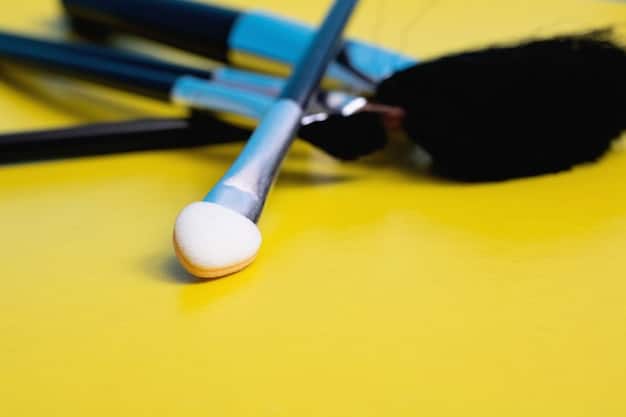
Maintaining Your Brushes: Cleaning and Storage
Proper maintenance is crucial for the longevity of your makeup brushes. Regular cleaning not only extends the life of your brushes but also prevents the buildup of bacteria, which can lead to skin issues.
Here’s how to keep your brushes in pristine condition.
Why Cleaning is Essential
Dirty brushes can harbor bacteria, oil, and dead skin cells, which can cause breakouts and skin irritations. Cleaning your brushes regularly removes these impurities and ensures a cleaner, more hygienic application.
Cleaning Frequency
How often you clean your brushes depends on how frequently you use them. Foundation and concealer brushes should be cleaned at least once a week, while eyeshadow and powder brushes can be cleaned every two weeks. Brushes used for liquid or cream products should be cleaned more frequently.
Step-by-Step Cleaning Guide
To clean your brushes, wet the bristles with lukewarm water and apply a small amount of brush cleaner or mild soap. Gently swirl the brush on a cleaning mat or in the palm of your hand to create a lather. Rinse thoroughly and squeeze out excess water. Reshape the bristles and lay the brush flat to dry.
- Use Brush Cleaner: Specially formulated cleaners dissolve makeup residue effectively.
- Avoid Soaking the Handle: Water can loosen the glue holding the bristles in place.
- Dry Flat: Prevents water from seeping into the handle.
Regular cleaning and proper storage are essential for maintaining your brushes.
Advanced Brush Techniques for Pro-Level Makeup
Once you’ve mastered the basics, you can explore advanced brush techniques to elevate your makeup game. These techniques can help you achieve a more polished, professional look.
Here are some advanced techniques to try.
Contouring and Highlighting
Use an angled contour brush to define the hollows of your cheeks, jawline, and temples. Apply a light dusting of contour powder and blend well for a seamless finish. Use a fan brush or a small, tapered brush to apply highlighter to the high points of your face, such as your cheekbones, brow bone, and the bridge of your nose.
Creating Dimension with Eyeshadow
Use a variety of eyeshadow brushes to create depth and dimension on your eyelids. Start with a base color all over the lid, then use a smaller brush to apply a darker shade to the crease. Blend well for a gradient effect.
Perfecting Your Blush Application
Smile to find the apples of your cheeks, and use a rounded blush brush to apply color in a circular motion. Blend upwards towards your temples for a natural, flushed look.
Experiment with these techniques to find what works best for you.
Choosing the Right Brushes for Different Skin Types
Your skin type can influence the type of brushes you should use. Different bristles and shapes work better for various skin conditions, ensuring a flawless and comfortable application.
Here’s what to consider for your skin type.
Oily Skin
For oily skin, synthetic brushes are ideal because they don’t absorb as much oil and are easier to clean. Use brushes with firm bristles for controlled application.
Dry Skin
If you have dry skin, opt for brushes with soft, natural bristles to avoid irritation. Use gentle blending techniques to prevent further dryness.
Sensitive Skin
For sensitive skin, choose hypoallergenic brushes with synthetic bristles. Clean your brushes frequently to prevent bacteria buildup and potential irritation.
- Combination Skin: A mix of synthetic and natural brushes can work well.
- Acne-Prone Skin: Clean brushes daily to prevent breakouts.
- Mature Skin: Use soft, fluffy brushes to avoid accentuating fine lines.
Selecting the right brushes for your skin type can improve your makeup application experience.
Investing in Quality: Brands and Brush Sets to Consider
Investing in high-quality makeup brushes can make a significant difference in your makeup application. While there are many brands and brush sets available, it’s important to choose options that fit your budget and needs.
Here are some reputable brands and sets to consider.
Top Brush Brands
Some of the top makeup brush brands include Sigma, Real Techniques, MAC, and Morphe. These brands offer a wide range of brushes made from high-quality materials that are designed to last.
Essential Brush Sets
If you’re just starting out, consider purchasing a brush set that includes all the essential brushes you need. Look for sets that include a foundation brush, concealer brush, powder brush, blush brush, and eyeshadow brushes.
Budget-Friendly Options
You don’t have to spend a fortune to get good quality makeup brushes. Brands like e.l.f. and BH Cosmetics offer affordable options that perform well.
Choosing the right brand and set can elevate your makeup routine.
| Key Point | Brief Description |
|---|---|
| ✨ Brush Types | Natural for powders, synthetic for liquids. |
| 🧼 Cleaning | Essential to prevent bacteria and skin issues. |
| 💰 Investment | Quality brushes enhance makeup application. |
| 🖌️ Techniques | Use specific brushes for contouring, eyeshadow, and blush. |
FAQ
▼
With proper care, high-quality makeup brushes can last for several years. However, if you notice shedding, fraying, or discoloration, it’s time to replace them. Regularly cleaned brushes last longer.
▼
Yes, baby shampoo is a gentle and effective alternative to brush cleaners. Just be sure to rinse thoroughly to remove any residue. Look for hypoallergenic and fragrance free options.
▼
Lay your brushes flat on a clean towel or use a brush drying rack. Avoid drying them upright, as water can seep into the handle and loosen the glue that holds the bristles in place.
▼
While expensive brushes aren’t always necessary, high-quality brushes often have better bristles and construction, which can improve makeup application and longevity. It depends on your budget and needs.
▼
Handle your brushes gently and avoid pulling or tugging on the bristles. When cleaning, avoid soaking the handle and use a mild cleanser. Store brushes properly to maintain their shape.
Conclusion
Mastering the art of makeup application starts with understanding and investing in the right tools. From selecting the best brushes for each application to maintaining them properly, these tips will help you achieve a flawless look every time. Embrace the process, experiment with different brushes, and enjoy the journey of enhancing your natural beauty.
